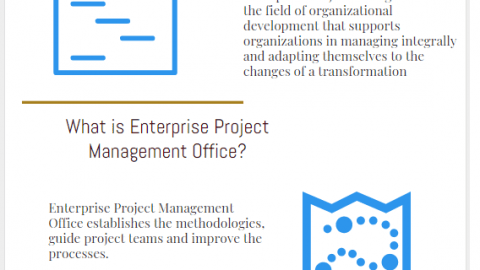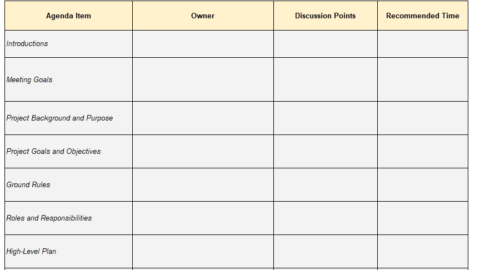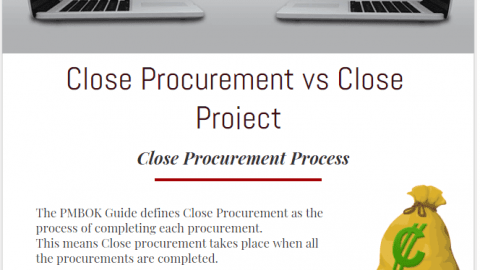Project Management Reporting : A Short Guide
Project management reporting and effective communication play a vital role in the success of any project. Team members, stakeholders, project managers, and even board members create reports regarding important issues. There are several reporting tools and methods in project management that project teams prepare and submit to stakeholders, clients, and managers in order to ensure effective communication among the participants. In this article, we will discuss five common types of reports in project management.
Table of Contents
The Importance of Reporting in Project Management
An efficient project management reporting system provides regular and formal information for the project. Team members, stakeholders, and also clients can be furnished with enough information about the project’s current status.
In this way, you can protect your project team members and project stakeholders from unforeseen risks and issues that are highly critical.
With the help of reports, we will recognize what is preventing the project from moving faster and we will have the possibility to break down the various aspects of the project against the project management plan, which was prepared before.
The project management reporting system also provides a documented history of the project and its proceedings. These valuable data can be used for claim analysis and/or settling disputes.
Note that your reports should be in a format that remains the same and can be easily read.
What are the Types of Project Management Reports?
As mentioned above, project teams use several project management reporting tools and methods to evaluate the current status, however, we will review five different types of reports in this article. Each of them serves different purposes.
1. Status Reports
One of the most common types of project management reports is the status report. You can prepare status reports on a daily, weekly, and monthly basis. The frequency of reporting depends on the detail level of the project and requirements. If the project is large and complex, you can produce daily reports to show the activity’s daily performance. If the project is relatively easier or the activities take longer than one week, you can report the activity status on a weekly or monthly basis.
Project status reports can be indicative of the following statuses pertaining to the project:
- Schedule Variance (SV)
- Cost Variance (CV)
- Earned Value Analysis (EVA)
- Percentage of Completion
- Milestone Status
- Procurement Status
- Health and Safety Status
2. Resource Reports
A resource is a necessary asset that is used to perform a certain task or a project. A resource can be a worker, a group, a vehicle, finances, and time. Most projects require several types of resources in order to be performed.
As a project management report, the resource report show you the breakdown of which worker is assigned to which activity on which day. With the help of resource reports, you can easily compare the planned and the actual performance of each resource.
Productivity analysis can be made by reviewing the resource reports. Because resource reports provide enough information about the completed quantities and spent manhours. Hence, project managers often analyze resource reports to decide leveling or smoothing when the resources are limited.
3. Risk Reports
A risk report includes a summary of the risk profile of the project. In order to create effective risk reports, the risk register should be updated and risk review meetings should be assembled by the project management team. Because risk reports are the output of risk register and risk review meetings.
The risks that have the potential to create the most problems should be highlighted in the risk reports. It is possible to create a risk report which involves all the risks within a project regardless of how important they are.
Updating the risk register regularly and brainstorming with project team members help to contribute to the risk register whenever they determine something needs to be recording.
4. Executive Reports
Executive reports are prepared for board members and top management. Therefore, the detail level of these kinds of reports is different than the other reports. But the detail level of executive reports must be enough to improve organizational decision making.
The project’s current status, important issues, high-level risks, income, and budget summary, key milestone status parts are often included in the executive reports briefly.
5. Time Tracking Report
Time tracking reports demonstrate how much time is spent to complete a task during the execution of the project. It helps the project team to determine how much team members spend on tasks. By analyzing the time tracking reports, project managers and team members can easily evaluate their performance and take action to complete tasks earlier.
Project Management Reporting and Communication
It is obvious that effective communication is key to successful project management. In the same way, effective project management reporting is vital for establishing a successful communication system. Because communication plays a significant role in all dimensions of business. The project manager is required to make sure that everyone is clear about their responsibilities. He also needs reports to understand the progress and communicate with stakeholders.
Summary
No matter if you’re a project engineer in the field or a project manager, you have to create reports to demonstrate what needs to be done and when by using the right methods. For this purpose, there are several different types of reports and reporting tools available.
- Status reports provide information regarding the status of the project during the implementation phase.
- Resource reports include information related to resource usage.
- Risk reports allow you to review project risks and their potential effects on the project goals.
- Executive reports are the high-level reports created for the top management to provide summary information regarding the project’s status, performance, and other important project information.
Note that you can use spreadsheets as well as using project management reporting tools.
How do you write a project report? You can use the comments section below to share your opinions and experiences.
External Reference
Are you overwhelmed preparing too many reports?
See Also
Product life cycle vs Project life cycle

Lorelei Anrei is a PMP, & ITIL certified Project Controls Manager. Ms. Anrei has worked in IT Industry for over 15 years. As a guest speaker, Anrei has shared presentations on Efficient and Effective Meetings. She is sales and marketing manager at LB Training Solutions.











I’m thankful to you for this article. The text explained with details the topic so it have helped to me and with summary its really help to understand.